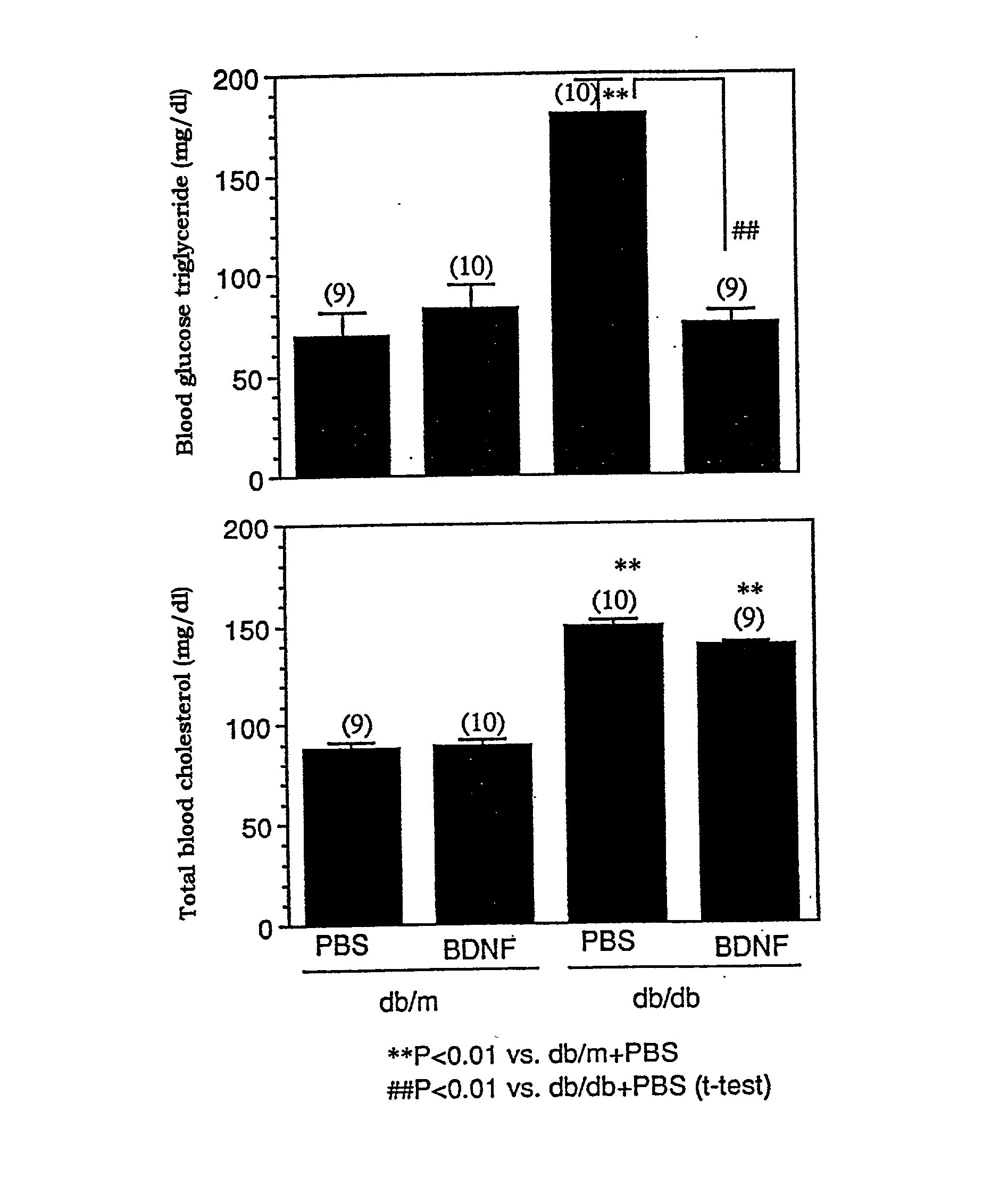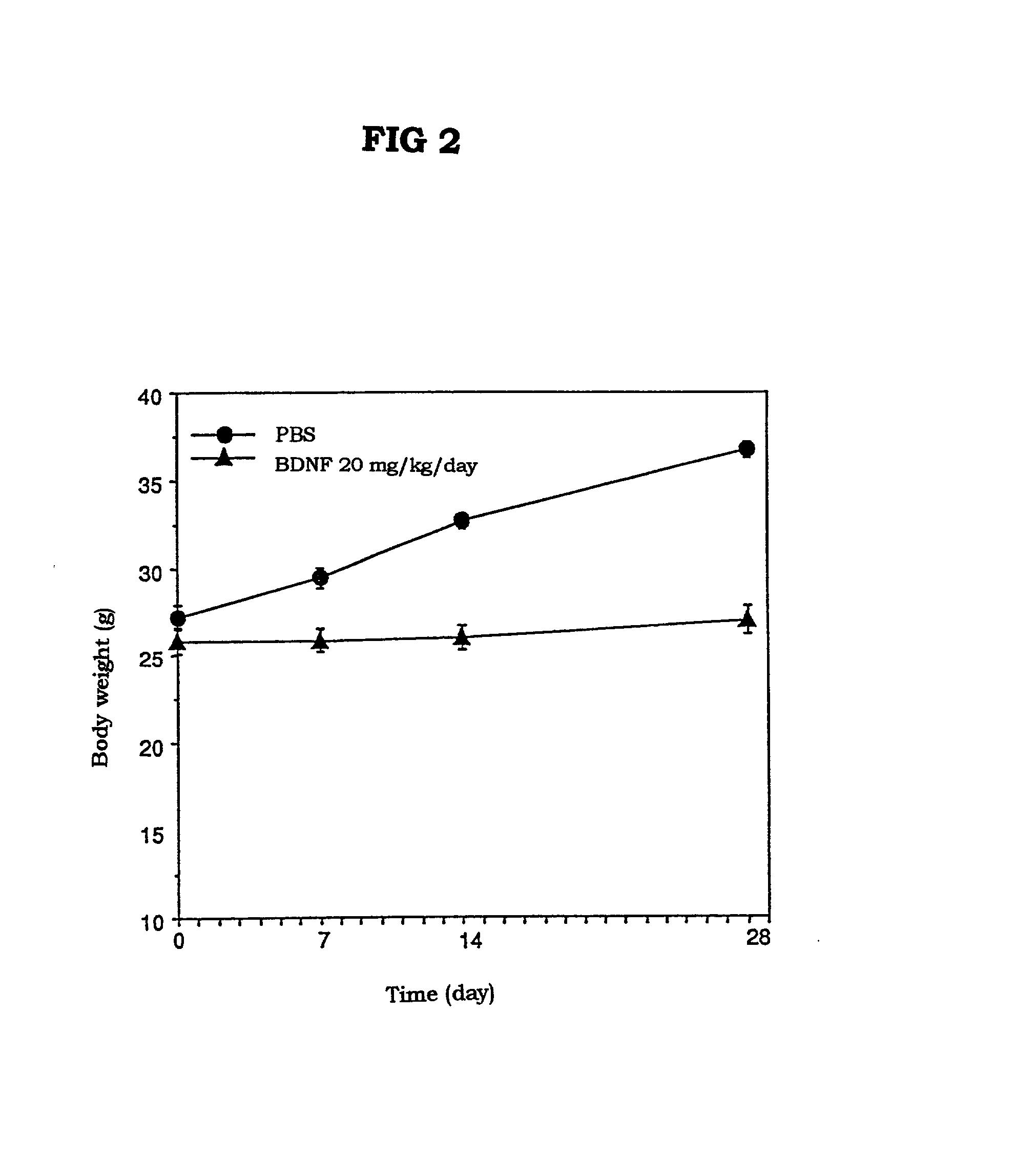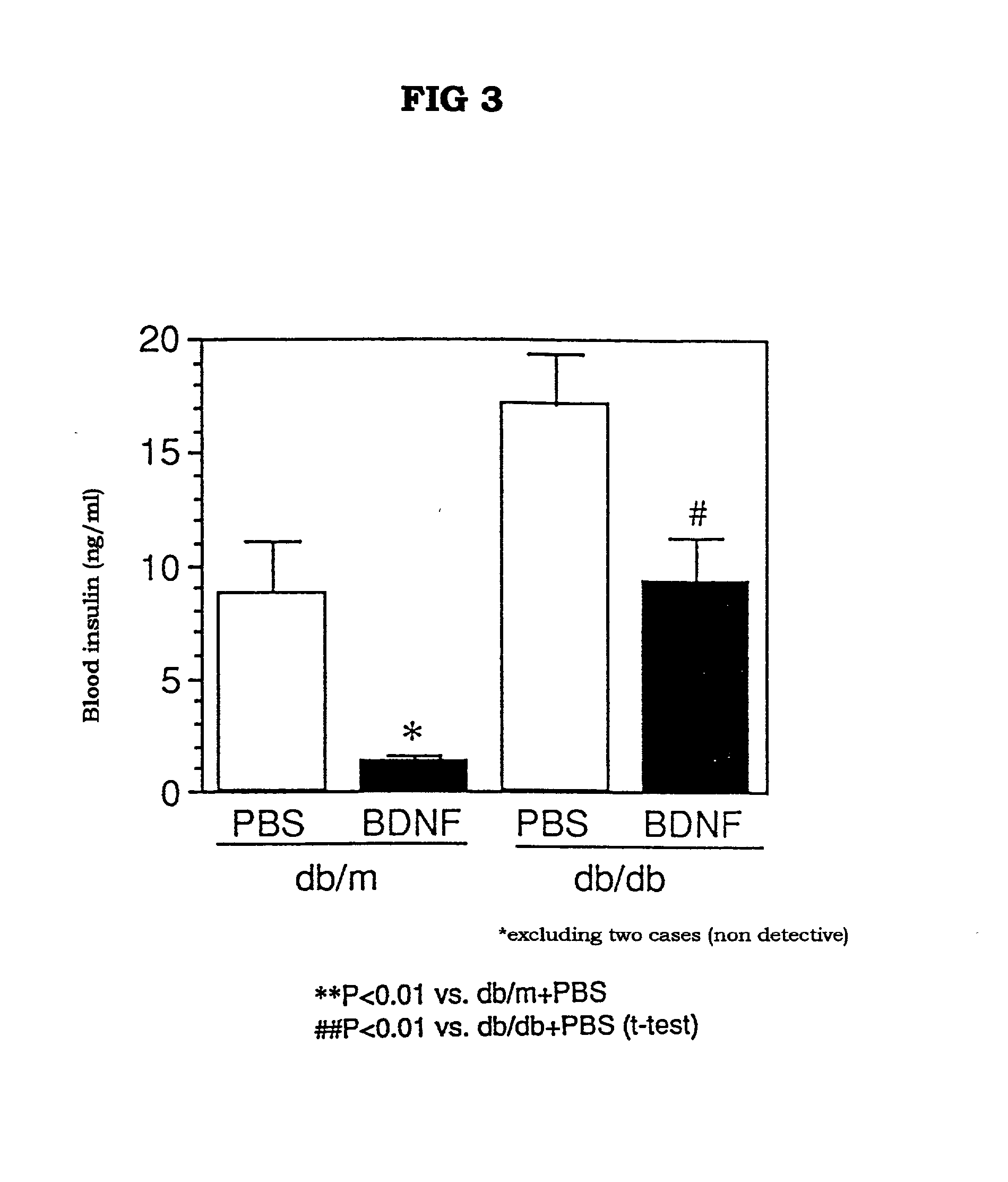Therapeutic agent for treatment of diabetes
a technology for treating diabetes and patients, applied in the field of diabetes patients, can solve the problems of insufficiently effective essential drug therapy for hyperlipemia, the diabetes patient is not sufficiently afflicted, and the amount of patients is increasing, so as to reduce or fail the effect of insulin secretion, safe control of blood glucose level of diabetic patients, and safe control of blood lipid level of hyperlipemia patients
- Summary
- Abstract
- Description
- Claims
- Application Information
AI Technical Summary
Benefits of technology
Problems solved by technology
Method used
Image
Examples
example 2
[0107] Pharmacological Experiment: Blood Lipid Controlling Activity of BDNF in db / db Mice
[0108] db / db Mice (female, 7 weeks old, 9-10 mice / group), which spontaneously showed hyperglycemia and hyperlipemia, were freely fed, and to the mice was subcutaneously administered PBS (phosphate buffered saline solution) or BDNF (20 mg / kg) once a day, 7 days a week, for 2 weeks. About 24 hours after the last administration, the blood was taken out from the mice at the tail vein under free feeding, and the lipid level in plasma was measured. The blood triglyceride level was measured with a triglyceride assay kit, Triglyceride G-Test Wako, manufactured by Wako Pure Chemical Industries, Ltd., and the total blood cholesterol level was measured with a total cholesterol assay kit, Cholesterol E-Test Wako, manufactured by Wako Pure Chemical Industries, Ltd. The blood lipid level of db / m mice that did not show hyperlipemia was considered to be the standard level for normal healthy animals.
[0109] The r...
example 3
[0110] Pharmacological Experiment: Anti-Obesity Activity of BDNF in db / db Mice
[0111] db / db Mice (female, 7 weeks old, 9-10 mice / group), which spontaneously showed hyperglycemia and obesity, were freely fed, and to the mice was daily subcutaneously administered PBS (phosphate buffered saline solution) or BDNF (20 mg / kg) once a day for 4 weeks. The body weights of the mice were measured at 7th day, 14th day, and 28th day before the daily administration of BDNF.
[0112] The results of the experiment are shown in FIG. 2. The body weight in the PBS-treated group was increased by 10 g (27 g.fwdarw.37 g), while the body weight of the BDNF-treated group was merely increased by about 1 g or less, and the obesity was not observed (25 g.fwdarw.26 g).
example 4
[0113] Pharmacological Experiment: Insulin Resistance Improving Activity of BDNF in db / db Mice
[0114] db / db Mice (female, 7 weeks old, 9-10 mice / group), which spontaneously showed hyperglycemia and hyperinsulinemia, were freely fed, and to the mice was daily subcutaneously administered PBS (phosphate buffered saline solution) or BDNF (20 mg / kg) once a day, for 4 weeks. About 24 hours after the last administration, the blood was taken out from the mice at the tail vein under free feeding, and the insulin level in the plasma was measured. The blood insulin level was measured with a kit for measuring insulin, manufactured by Morinaga Bioscience Institute, Ltd. The blood insulin level of db / m mice that did not show hyperinsulinemia was considered to be the standard insulin level for normal healthy animals.
[0115] The results of the experiment are shown in FIG. 3. The blood insulin in the PBS-treated db / db mice was raised to about 17 ng / ml, while in the BDNF-treated group, the increase in ...
PUM
| Property | Measurement | Unit |
|---|---|---|
| body weight | aaaaa | aaaaa |
| pH | aaaaa | aaaaa |
| pH | aaaaa | aaaaa |
Abstract
Description
Claims
Application Information
 Login to View More
Login to View More - R&D
- Intellectual Property
- Life Sciences
- Materials
- Tech Scout
- Unparalleled Data Quality
- Higher Quality Content
- 60% Fewer Hallucinations
Browse by: Latest US Patents, China's latest patents, Technical Efficacy Thesaurus, Application Domain, Technology Topic, Popular Technical Reports.
© 2025 PatSnap. All rights reserved.Legal|Privacy policy|Modern Slavery Act Transparency Statement|Sitemap|About US| Contact US: help@patsnap.com



